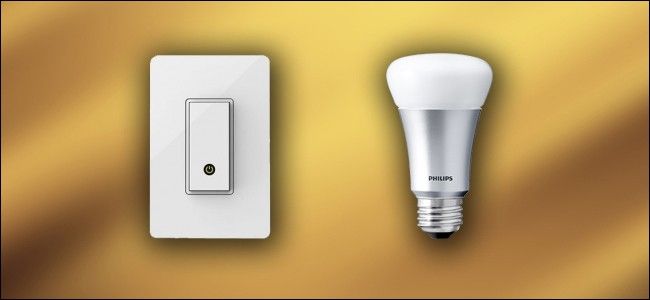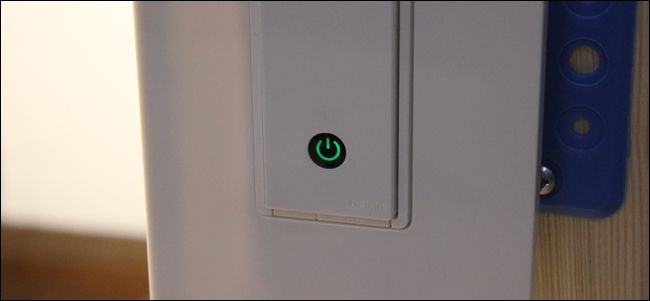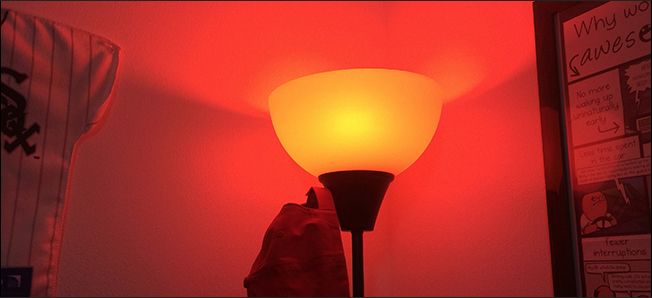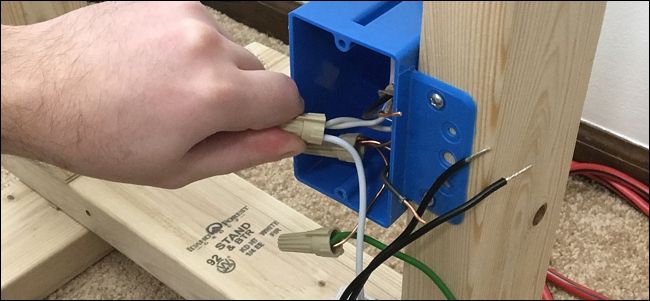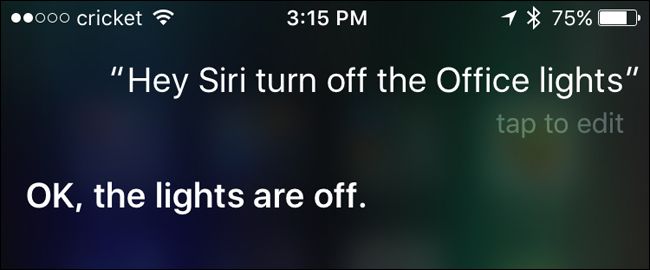Quick Links
If you want to control your lights from your phone or with your voice, you have two options to consider: buy smart bulbs or buy smart light switches. Here's how to decide between those two options.
Smart Light Switches Are Cheaper
If you purely base the comparison on cost, smart light switches are likely to be far cheaper than smart bulbs, especially since one light switch can control multiple light fixtures, depending on how your house's wiring is set up.
A smart light switch, like the Belkin WeMo Light Switch, can be bought for around $40-$50. A Philips Hue starter kit at its cheapest costs $70, and it only comes with two measly bulbs. Granted, the biggest cost of the starter kit is the Hue Bridge hub, and once you get past that, you can grab Hue bulbs for as low as $15 each. (You can also go without the Hue Bridge Hub if you only want to control the lights with Hue's Dimmer Switch.)
However, if you want more than just soft white smart bulbs, you'll be paying a bit more. Philips' Hue White Ambiance bulbs can do soft white as well as a daylight color temperature, but you'll pay $30 per bulb. Even more than that, you have the Hue White & Color bulbs, which can display pretty much any color imagineable, along with different temperatures of white. Those will set you back $50 a piece.
If there are three light fixtures in the living room, it would cost a minimum of $85 if you went the smart bulb route with Philips Hue, whereas it would only cost $45 to get a smart light switch like the WeMo Light Switch (assuming that one light switch controlled all three light fixtures).
Smart Bulbs Let You Create "Scenes"
While smart light switches may be cheaper, smart bulbs allow you to adjust brightness and change colors (if they support that). Granted, most smart light switches can dim the lights, but with smart bulbs, you can turn on your lights at a pre-defined brightness and even have one bulb brighter than another if you want---the world is your oyster with smart bulbs.
Plus, if you have a color-changing bulb, you can change its white color temperature from a soft white to a daylight color and then back again throughout the day to simulate natural light. And with apps like iConnectHue, you can create cool animations and light shows with your Hue bulbs, which can go great with any house party.
You Can Use Any Bulb with Smart Light Switches
With smart light switches, not only do you not need smart bulbs, but you can use just about any light bulb you have lying around, so if there's a particular type of light bulb you're loyal to, getting a smart light switch won't affect that.
One thing to keep in mind, though, is that if you want to use the smart light switch to dim your lights, you'll want to make sure to get bulbs that are dimmable. Most high-end LED bulbs are, as well as a small handful of CFL bulbs, but make sure to look on the bulb's packaging to make sure.
Smart Light Switches Require Specific Wiring
Unfortunately, a smart light switch won't work in every house, while smart bulbs work in any house that has traditional light sockets. This is because most smart light switches need to be wired up to a neutral wire, whereas traditional light switches don't.
In a lot of older homes, there aren't any neutral wires in light switch boxes. Most new-ish homes (even going back to the 70s) will usually come with neutral wires in the light switch box, though. Most homeowners or renters shouldn't have to worry about this, but if you're not sure, it may be a good idea to check your wiring setup to see if it would support a smart light switch to begin with. If not, then smart bulbs may be in your future.
There are some smart light switches that don't need neutral wires (like Lutron's Caseta lineup), but your options are still severely limited.
Smart Bulbs Provide More Flexibility with Switches
When paired with the Hue Dimmer Switch, you can turn your smart bulbs on and off the old-fashioned way by using it just like you would a regular light switch. However, unlike standalone smart switches, smart bulbs let you program the switch to control whichever lights you want. A smart light switch can only control the lights that are wired to that switch.
This is particularly useful if, say, you have some hard-wired light fixtures, and some that are plugged into the wall (like a desk lamp or a standing lamp). With smart bulbs, you can turn them all on with the press of one button.
Furthermore, with the previously mentioned iConnectHue, you can customize the buttons on the Hue Dimmer Switch to pretty much do whatever you want with the lights, including holding down a button (instead of just tapping it) to turn on lights a different way.
Both Can Work with Alexa & Siri
Depending on what brand of smart light switch or smart bulbs you get, both can work with Alexa and/or Siri. For example, Belkin WeMo products work with Alexa, but not with Siri, while Philips Hue works with both voice assistants.
However, you can grab just about any Z-Wave light switch, connect it to SmartThings, and have it work with Alexa. Siri is a bit more restrictive, though, as the device needs to support HomeKit, and the support list isn't that long right now. If voice control is something that's important to you, then you'll want to pay close attention to the brand that you're getting, whether it'd be smart light switches or smart bulbs.
Title image from Belkin, Philips, Gile68/Bigstock

